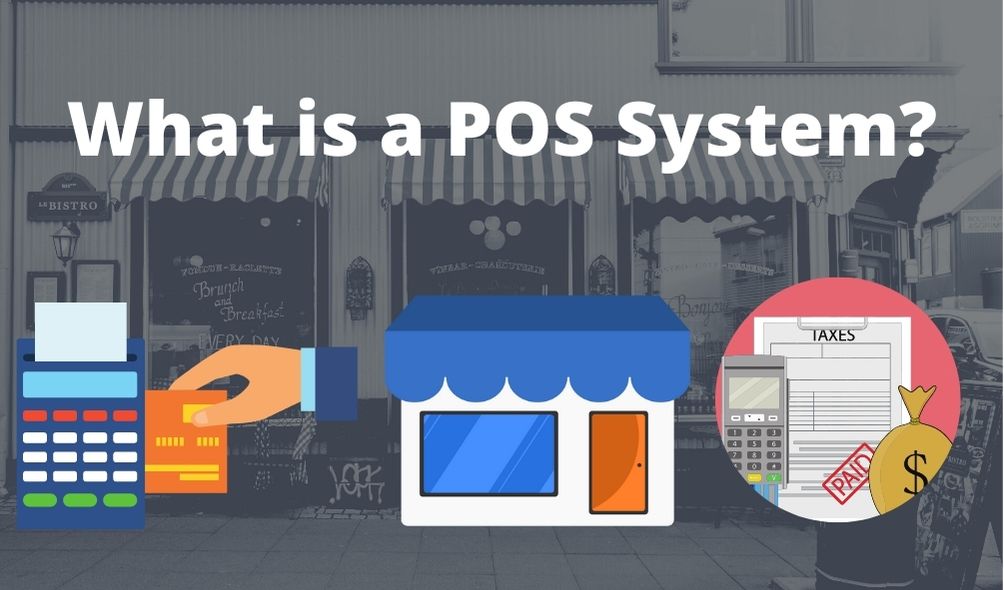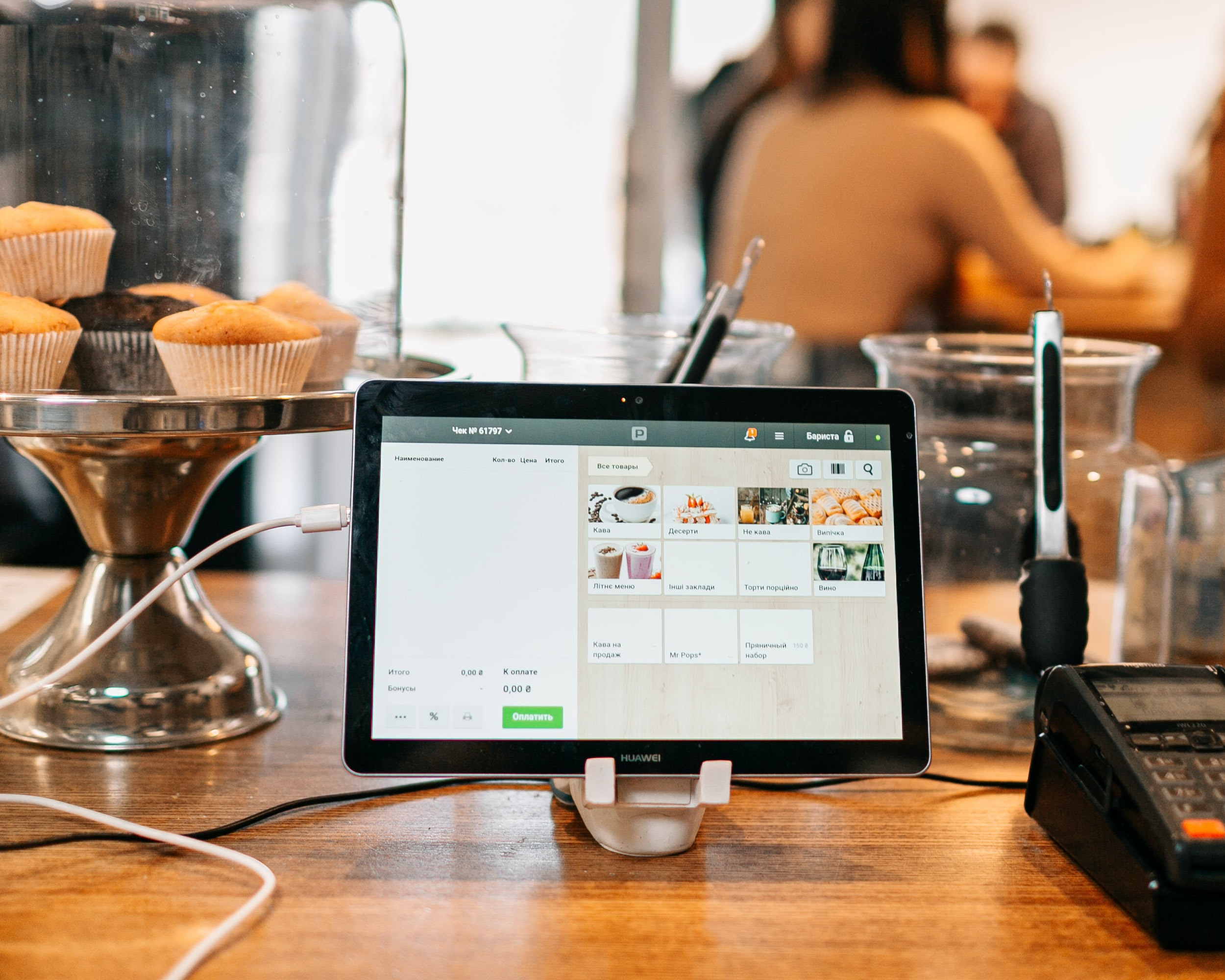Introduction

POS (Point of Sale) is a type of software used to complete a transaction when a customer pays for goods or services in a shop. POS software has the components of a cash register and a computer where the shop owners can enter the products purchased by customers and then calculate the cost and receive payment from customers.
Businesses are increasingly adopting POS systems for a variety of reasons, one of the most obvious and compelling being that a POS system eliminates the need for price tags.
When adding stock, selling prices are linked to the product code of an item, so the cashier only needs to scan this code to process a sale. If the price changes, it is also simple to do so through the inventory window.
–>Check out these POS resources<–
Best retail POS systems for small business
Cheapest POS System for Restaurants
Benefits of a POS system

POS systems can save a lot of time and help business owners of all size keep track of their payments and product inventory here are some benefits of the technology:
- Inventory Management: Keep track of inventory for brick and mortar stores as well as eCommerce businesses as well as receive alerts when certain products in the inventory are starting to get low so they can be ordered in as needed.
- Payment options: Integration with multiple payment methods like Credit cards, mobile payments such as Apple Pay, AliPay, Google Pay and many others.
- Greater accuracy: Less room for errors, cash registers need manual input which can result in occasional errors. POS software typically allows you to select products on a touchscreen interface and have information like prices populated resulting in less typing errors.
- Simpler accounting: Transactions can be exported easily allowing you to easily keep track of finances and complete your accounting/tax.
- Ease of use: Most POS software platforms are very easy to use and as a result staff members can be trained relatively easily to use the software.
Types of POS systems:

(An example of a mobile Point Of Sale device)
Mobile POS Device
A mobile POS is the most basic example of the technology and typically only manages and processes payments. In some cases these systems may also have some light inventory management functionality.
Terminal POS
This type of system is more commonly used and can be a hardware, software or a combination of the two. Some other features that may be present in a terminal unit could include barcode scanning and other management functionality.
Cloud hosted solutions
While there are many physical devices and local software products available there are also several cloud based systems which store the data online in a server which can then be accessed across different devices.
An example of this style of POS would be Square which has a physical device but the information can be accessed in a web browser, mobile app or desktop computer via the internet.
On-Premise solutions
In addition to cloud based options you can also get custom developed POS software that runs on your own hardware with features customized to your liking and on your choice of computing platform.
Industries

The retail industry is a significant user of POS terminals. A cash register, receipt printer, customer display, and barcode scanner are common components of a retail POS system.
A conveyor belt, checkout divider, weight scale, integrated credit card processing system, signature capture device, and customer pin pad device may also be included.
Many retail point-of-sale systems include an accounting interface that sends sales and cost-of-goods data to separate accounting applications.
The other main industry that utilizes POS technology heavily is the hospitality sector. This encompasses all levels from take-away shops to cafes and restaurants which use it as a central platform to process orders and accept payments.
Other industries include businesses in the travel sector such as hotels, motels and holiday inns.
Some background history on the technology

The IBM 3650 and 3660 store systems were essentially a mainframe computer that served as a store controller for up to 128 IBM 3653/3663 point-of-sale registers. In 1974, William Brobeck and Associates built one of the first microprocessor-controlled cash register systems for McDonald’s Restaurants.
It made use of the Intel 8008, an extremely early microprocessor (and forerunner to the Intel 8088 processor used in the original IBM Personal Computer).
On the 16-bit Atari 520ST colour computer, Gene Mosher introduced the first graphical point-of-sale software with a touchscreen interface in 1986. ViewTouch was the first commercially available POS system with a widget-driven colour graphic touch screen interface, and it was installed in a number of restaurants throughout the United States and Canada.
In 1986, IBM released the 468x series of point-of-sale machines, which were based on Digital Research’s Concurrent DOS 286 and FlexOS 1.xx, a modular real-time multi-tasking multi-user operating system.
Since this time and the advent of the internet, cloud technology and improvements in display technology Point Of Sale technology the devices have become smaller and more accessible as they can be accessed in a browser without necessarily requiring expensive hardware.
Other relevant pages from our tech glossary:
IaaS (Infrastructure As A Service)
GPS (Global Positioning System)
Conclusion
Thank you for reading this glossary entry on our website, to see other technical definitions check out our tech glossary for more informational resources.
AGR Technology is an Australian business providing a range of business services such as Software Development, Web Design/Hosting and more across different parts of Australia.
You can also visit our blog for different tips and tricks, free software and YouTube channel for our video content.
Our Google business profile with updates:
Source(s) cited:
“Point of sale” Wikipedia, 3 May 2003, en.wikipedia.org/wiki/Point_of_sale. Accessed 23 Sept. 2021.
Jamie Tubers, CC BY-SA 4.0 https://creativecommons.org/licenses/by-sa/4.0, via Wikimedia Commons
![logo-new-23[1] logo-new-23[1]](https://cdn-ihdfn.nitrocdn.com/eZVJvoSTyVixkEUySRKiaseNtUlmgCyu/assets/images/optimized/rev-b161c78/agrtech.com.au/wp-content/uploads/elementor/thumbs/logo-new-231-qad2sqbr9f0wlvza81xod18hkirbk9apc0elfhpco4.png)